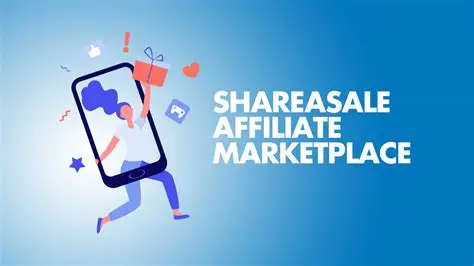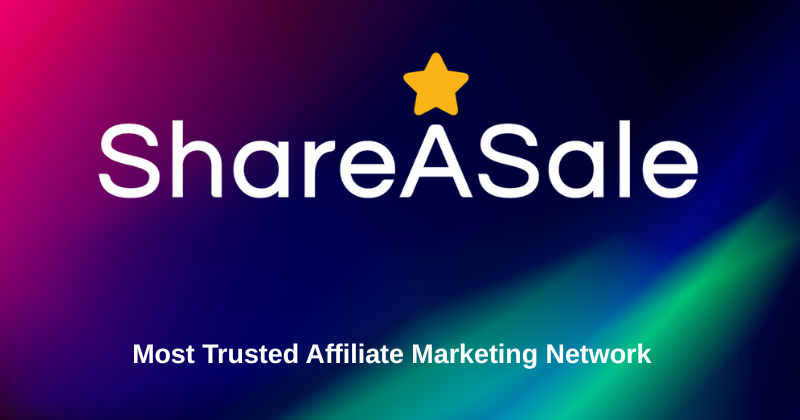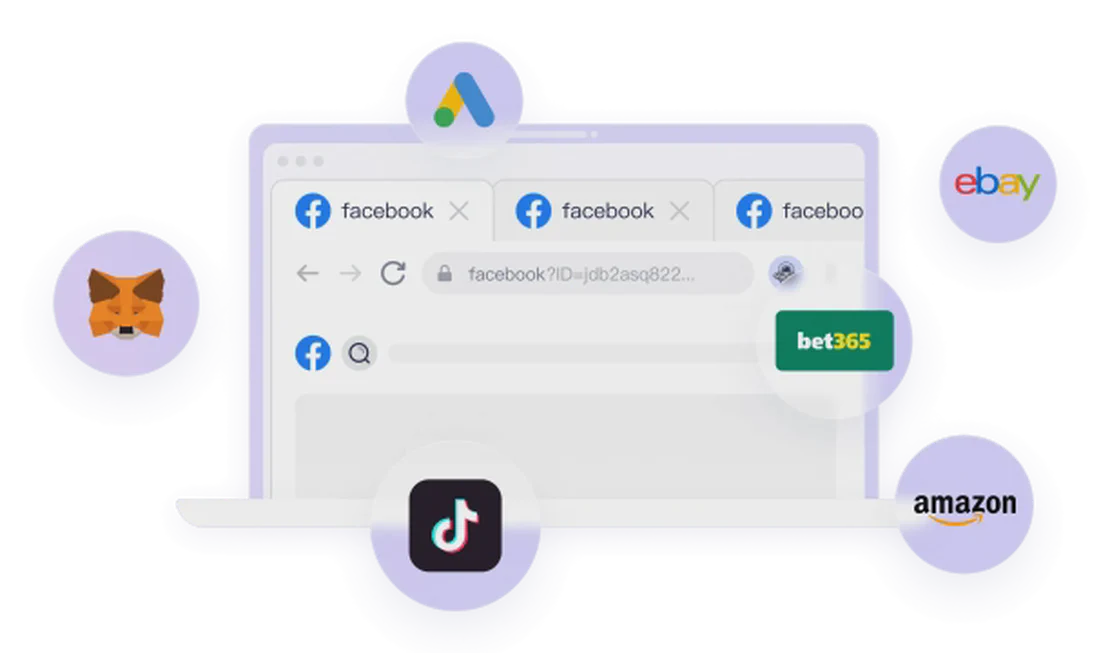Have you ever dreamed of unlocking a passive income stream through affiliate marketing? Many are drawn to this field by the vision of “one-click links and waiting for commissions.” However, after diving in, they discover it’s less of a casual hobby and more of a long-distance business expedition requiring sophisticated tools and precise navigation—a mission, not a treasure hunt. Platforms like ShareASale (Awin) provide you with a powerful dashboard and a vast inventory of products, but these are merely tools, not the guarantee of success.
True success stems from upgrading your mindset about affiliate marketing from a “side hustle” to a “systematic business.” It’s no longer just about “joining programs,” but about “building a resilient and scalable business ecosystem that can hedge against risks and foster continuous growth.”

Understanding Your Dashboard: The Art of Data-Driven Decisions
The ShareASale dashboard may appear simple, but it contains the core of business decision-making: making decisions based on data. From your Today at a Glance summary to historical sales trends, your current balance to Top Merchants rankings, every number is a barometer of your business’s health.
But the place where the data truly “comes alive” is the “Search for Merchants” page. This is where the “armory” and “talent market” for your entire affiliate marketing empire are located. When filtering programs, your eyes should never settle solely on the “per sale commission rate.”
- Commission Rate: This is not the only metric. Commission rates for physical products typically range from 5% to 10%, while digital products can be as high as 50-75%. The reason is simple: the latter have virtually zero marginal cost. You must understand that a 6% commission program generating stable, high-volume sales can be far more valuable than a 50% commission program that nobody buys.
- Earnings Per Click (EPC): This is the golden indicator for measuring a program’s “market heat” and “conversion efficiency.” It tells you how much, on average, each click is worth to your wallet. A 7-day EPC of $391.44 means that, in the current environment, every 100 clicks generate $391.44 in revenue. This is an incredibly powerful tool to quickly sift through hundreds of programs and identify the true stars.
- Conversion Rate: A high EPC is great, but the conversion rate reveals the “why” behind it. A 1.62% conversion rate means that for every 100 visitors, nearly 2 will make a purchase. This reflects the effectiveness of the product page, pricing, and how well it matches your audience. Behind a high EPC must be a healthy conversion rate.
- Cookie Duration: A 30-day cookie means that even if a user clicks your link today, they can purchase the next 29 days, and you’ll still get the commission. This is crucial for determining if you can benefit from “delayed conversions,” especially for high-value products that require a longer decision-making process.
The core mental shift at this stage is: You are no longer a salesperson; you are a professional “traffic broker” and “product matchmaker.” Your job is to sift through massive amounts of data to find the programs that can most efficiently combine with your traffic to generate the most significant commercial value.
Program Application: From “I Want to Promote” to “What Value Can I Bring”
After identifying your target programs, the application process is your first step from being a “requester” to a “potential partner.” The form asking for your “Promotional Methods” and a brief “pitch” isn’t a formality; it’s your best chance to showcase your professionalism.
- Showcase Your Unique Value: Don’t just say, “I’ll promote on my Instagram.” Instead, say, “I manage a 50,000-follower Instagram focused on lifestyle reviews, with 80% of my audience being women aged 25-45, who have a high propensity to purchase home improvement products. I plan to promote your brand through high-quality short videos and images, demonstrating the product’s real-world applications to effectively reach your target customer base.”
- Respect the Rules to Build Trust: Carefully read the PPC (Pay-Per-Click) advertising rules. Prohibiting the bidding on trademarked terms is an industry norm and is meant to protect the brand’s image. Explicitly stating in your application that you understand and will abide by these rules can significantly increase your chances of approval.
This reflects a spirit of contract and respect, which is the foundation for building long-term partnerships.

From “Single-Point Promotion” to “Matrix Empire”: The Essence and Risks of Scalable Operations
Once you’ve mastered the platform’s operations and data interpretation, you may no longer be satisfied with promoting just one or two programs on a single blog or social media channel. You’ll start thinking about how to operate multiple projects simultaneously, covering different categories and audiences to diversify risks and create multiple income streams. This strategy signifies an evolution from an “individual promoter” to a “matrix marketing expert.”
However, moving from managing one project to a matrix, you are no longer facing a “promotion skills” problem, but a “scalable operations” and “account security” issue. When you need to create content, manage links, and track data for 3 different brand projects (e.g., promoting radar detectors on a car blog, clothing on a fashion Instagram, software on a YouTube channel) at the same time, your operational landscape becomes vast and complex. You might need to manage dozens of different promotional links, dozens of communities, and dozens of advertiser partnerships.
In this multi-matrix scenario, the most fatal risk is account association. Affiliate platforms and advertisers will use a series of data points—such as your IP address, device fingerprint, browser configuration—to determine whether your different promotional channels (websites, social media accounts) belong to the same person. Once flagged as a linked matrix, your accounts could face shadowbanning, or worse, a collective ban of all accounts and partnerships. This is devastating for the hard-built “income matrix” you’ve created.
This is precisely the “scalable security” issue you cannot avoid when evolving from a “business novice” to a “matrix operations expert.” Your core strength lies in product selection, content creation, and traffic strategy, but the security, stability, and scalability of your entire affiliate matrix depend on your ability to build a secure, independent digital environment for each “promotional channel” and “business identity.” Our product, FlashID Fingerprint Browser, is introduced at this pivotal moment to serve as the “digital identity safe harbor” that secures and efficiently operates your entire “affiliate marketing matrix.”
With FlashID, you can create a completely separate, infinitely scalable digital environment for each of your “business projects” (e.g., “Car Blogger Project,” “Fashion Influencer Project,” “Software Reviewer Project”). This means:
- Absolute Security Isolation: Each environment has its own unique IP address, browser fingerprint, and login identity. When you log into ShareASale and your blog under your “Car Blogger Project” persona, the system sees a professional, credible automotive promoter. When you switch to your “Fashion Influencer Project,” it sees a brand new, trend-focused independent user. This creates an impregnable firewall for your different business projects, completely eliminating the risk of collective bans due to account association, allowing you to boldly explore large-scale, multi-channel, multi-brand marketing ventures.
- Automated Matrix Management: The built-in RPA (Robotic Process Automation) feature is the key to liberating you from “repetitive labor.” You can write an RPA script to make FlashID automatically perform tasks like: using the “Car Blogger Project” persona to publish a new radar detector review with affiliate links every Monday; simultaneously, using the “Fashion Influencer Project” persona to automatically sync new Instagram Story links to multiple social media accounts. This “one project, one environment” automated matrix operation model allows you to easily manage a vast and efficient affiliate marketing matrix with the power of one person, truly achieving “solo business entrepreneur” and “scalable” status for your side income.
- Seamless Cross-Platform Operations: Affiliate marketing is not limited to desktops. You might shoot review videos on your phone, write blog posts on an iPad, and monitor backend data on your computer. FlashID Cloud Phone provides perfect support. Each client’s cloud phone environment is identity-bound to their FlashID browser environment, ensuring security and consistency between mobile and web operations, allowing your “affiliate marketing matrix” to function reliably anytime, anywhere.
When you evolve from an individual promoter relying on personal effort to a “matrix business master” armed with strategy, tools, and FlashID, the foundation for securing all your business projects and executing your technical strategies is this “digital identity safe harbor system.” It allows you to focus on the core value of product selection, content creation, and traffic optimization while your “business empire” sails on a solid, secure, and scalable technological foundation, achieving a qualitative leap from “occasional earnings” to a “stable asset” in your passive income.

Ten Frequently Asked Questions (FAQ)
Q: I’m a complete beginner with no website, only a few hundred followers on Instagram. Can I still succeed in affiliate marketing?
A: Absolutely. In the initial stage, a highly engaged, niche audience is far more valuable than a large, general one. Choose affiliate programs that are tightly related to your niche interests. Promoting them with sincere, valuable content can lead to a much higher conversion rate than promoting to a broad audience.
Q: Why do some affiliate programs have such high EPCs while others are very low? How should I interpret this?
A: EPC (Earnings Per Click) is a core efficiency metric. A high EPC means the program has very high “traffic conversion” efficiency. However, you need to look at it alongside the “conversion rate.” A program with a high EPC and a high conversion rate is an absolute “cash cow.” Also, consider the “average order value” and “commission rate.” Sometimes, a program with a slightly lower EPC but a much higher average order value might ultimately generate more total income.
Q: If a program has a 30-day cookie, does that mean I won’t get a commission if the user buys after 30 days?
A: Yes, the cookie duration set by an affiliate program is a critical window for tracking whether a click from your link is valid. If the user makes a purchase after this window, the commission will typically go to the advertiser. Therefore, for products that require long decision-making (e.g., high-ticket items, B2B services), a longer cookie duration (like 60 or 90 days) is a huge advantage.
Q: When submitting an affiliate program application, how can I write a “pitch” with a higher approval rate?
A: Be sincere, specific, and show value. First, demonstrate that you understand the brand. Second, clearly show your traffic channels (including follower count, platform type, audience demographics) and your content style. Most importantly, explain how your promotional plan aligns with the brand and what value you can bring to them (e.g., high-quality reviews can enhance brand image).
Q: If a product I’m promoting sells really well, but the brand terminates our partnership later, what should I do?
A: This is the risk of a “single point of failure.” This is precisely why you need to build a “matrixed” promotional system. Don’t put all your eggs in one basket. Always maintain multiple affiliate programs, promotional channels, and categories running simultaneously. This can effectively hedge against the risk of a single brand or channel disappearing.
Q: Besides ShareASale, what other good affiliate platforms would you recommend?
A: There are many excellent affiliate networks in the market. For example, CJ Affiliate (Commission Junction) has a large number of well-known brands; ClickBank specializes in digital products with very high commission rates; Rakuten Advertising (LinkShare) is another giant, especially in the fashion and retail sectors. It’s recommended to register on multiple platforms based on your content niche to achieve complementary resources.
Q: Why is my affiliate income so unstable, fluctuating up and down?
A: Usually, there are several reasons: 1. Your income relies on a few high-conversion links; once a product sells out or a promotion ends, your income plummets. 2. Your promotional channels are too singular, relying on natural social media traffic, which is highly susceptible to algorithm changes. 3. You have failed to consistently produce new content to attract traffic and maintain user engagement.
Q: Why do I need to use FlashID to manage my multiple affiliate marketing projects? Can’t I just open multiple browser windows and log in?
A: Managing all your projects under one browser is a “cardinal sin” of scalable operations. Because they share the same IP address and browser fingerprint, the affiliate platform can easily recognize this as “matrix operations” when it sees a large volume of actions from the same environment, leading to restrictions or even bans. FlashID solves this core risk by creating independent, clean, and unassociated digital identities for each project.
Q: In what specific scenarios can FlashID’s RPA automation be used for affiliate marketing?
A: RPA can help you handle all repetitive, mechanical operational tasks. For example: scheduling social media posts with affiliate links at specific times, regularly checking and recording conversion data for each program, automatically publishing new articles to your multiple blog sites, automatically sending EDMs with promotional content, etc. This frees you from tedious daily execution, giving you more time to focus on finding new partnership opportunities and planning higher-quality promotional content.
Q: My affiliate links are very long and ugly, which affects the user experience. What should I do?
A: The vast majority of affiliate platforms, including ShareASale, have a built-in “Link Builder” or “Deep Linking” tool. You can use it to generate shorter, more memorable, and easier-to-share links. You can even link directly to specific product pages (deep links) instead of just the brand’s homepage. This can effectively increase user click-through rates and improve their experience.
You May Also Like
